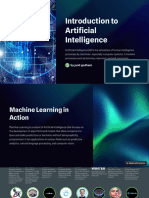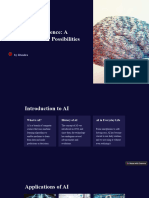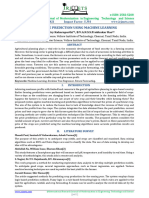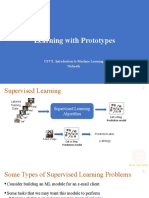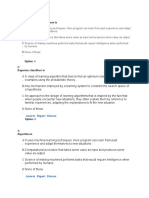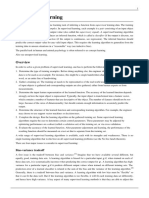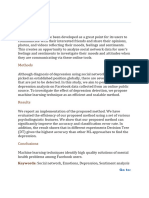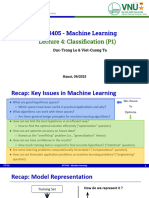0% found this document useful (0 votes)
9 views10 pagesIntroduction To AI
Artificial Intelligence (AI) is a transformative field that simulates human intelligence processes through machines, evolving from rule-based systems in the 1950s to today's advancements in deep learning and natural language processing. AI applications span various domains, including smart home automation, virtual assistants, and autonomous vehicles, enhancing efficiency and user experience. Data Science and Computer Vision are key components of AI, enabling data-driven decision-making and visual data interpretation, respectively.
Uploaded by
anaghacomputerCopyright
© © All Rights Reserved
We take content rights seriously. If you suspect this is your content, claim it here.
Available Formats
Download as PPTX, PDF, TXT or read online on Scribd
0% found this document useful (0 votes)
9 views10 pagesIntroduction To AI
Artificial Intelligence (AI) is a transformative field that simulates human intelligence processes through machines, evolving from rule-based systems in the 1950s to today's advancements in deep learning and natural language processing. AI applications span various domains, including smart home automation, virtual assistants, and autonomous vehicles, enhancing efficiency and user experience. Data Science and Computer Vision are key components of AI, enabling data-driven decision-making and visual data interpretation, respectively.
Uploaded by
anaghacomputerCopyright
© © All Rights Reserved
We take content rights seriously. If you suspect this is your content, claim it here.
Available Formats
Download as PPTX, PDF, TXT or read online on Scribd
/ 10



















































